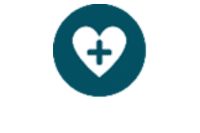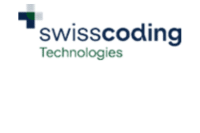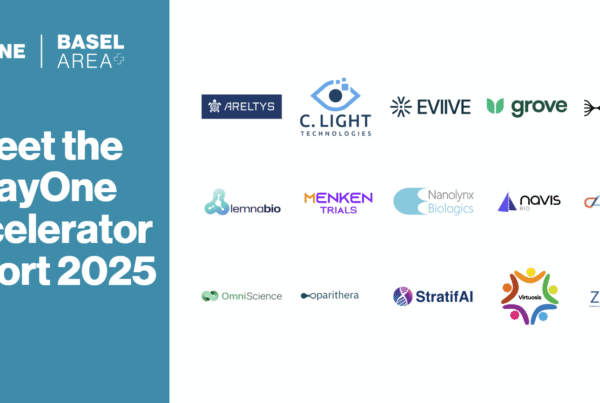Supporting Swiss hospitals in the transition to TARDOC and outpatient flat rates: AI for Coding Validation
The Digital Health Nation Innovation Booster, powered by Innosuisse, continues to drive collaborative innovation in Swiss healthcare.
Led by DayOne Healthtech Innovation the program supports the development of impactful digital health solutions through open collaboration between hospitals, startups, researchers, and industry partners. In its 2025 second edition, this challenge focused on supporting Swiss hospitals in their transition to the new outpatient tariff system (TARDOC) by co-creating AI-assisted coding validation tools. This challenge exemplifies how open innovation can turn complex regulatory shifts into opportunities for smarter, more efficient healthcare.
Discover the latest Open Innovation Challenge “AI for code quality and completeness validation under TARDOC and outpatient flat rates”:
From tariffs to transformation
As the country prepares for the end of the TARMED system and the introduction of TARDOC on 1 January 2026, hospitals face a fundamental shift in how outpatient services are documented, coded, and reimbursed. What may seem like an administrative change actually demands a transformation in practice: under the new model, each service is evaluated based on organ system, insurance type, and calendar day. Ensuring every patient encounter aligns with this logic is no longer feasible through manual processes alone.
At Kantonsspital Baselland (KSBL), which operates three sites and serves around 290 000 residents, this challenge is already tangible.
”Good documentation is key. Automation can help us keep quality high and reduce the manual workload on clinicians.
Dietmar KrämerHead of Medical Standards and Development, KSBL
Why AI – prevention over correction
Manual coding and quality control processes are increasingly unsustainable in high-volume outpatient environments. The Innovation Booster Challenge explored how AI could help hospitals validate coding accuracy and documentation quality before billing, preventing reimbursement errors, improving efficiency and saving time.
- No additional FTEs required: allowing human coders to focus on complex or ambiguous cases.
- Early error detection: preventing financial losses before claims are submitted.
- Scalability: supporting hospitals nationwide through adaptable, data-driven solutions.
- Zero-disruption integration: AI can work on exported data formats (like ALIS v5) without altering clinical workflows.
This approach aligns with the Innovation Booster’s open innovation philosophy: co-create practical, human-centered tools that solve systemic challenges while respecting real-world hospital constraints.
Open innovation in practice
To explore how AI could support coders and clinicians, the Digital Health Nation Innovation Booster launched an Open Innovation Challenge in spring 2025. The call invited hospitals, startups, data scientists, and software companies to co-develop AI-assisted coding validation tools that support Swiss hospitals during the tariff transition.
From the submitted proposals, four project teams were selected to address coding validation directly, and one team tackled the broader challenge of improving clinical documentation. Each team received CHF 20,000 in non-dilutive funding, access to anonymized ALIS v5 data from KSBL and expert mentoring to refine their solutions across desirability, feasibility and viability.
By the Demo Day in October 2025, every team presented a functional MVP capable of automated analysis and code validation. Approaches included rule-based completeness checks, tariff simulations and dashboard-driven plausibility tools. All teams achieved measurable improvements in coding completeness and showed that automation can operate effectively within Swiss hospital IT environments.
Co-creation that works
The set up of the Open Innovation Challenge facilitated close collaboration between hospital professionals and innovators, and more importantly showed that open collaboration between hospitals and innovators works even in a highly regulated environment. KSBL’s coding, performance management, and IT departments worked side-by-side with developers, clarifying data definitions, testing algorithms and validating output against real billing logic.
As one participant reflected during Demo Day:
“We didn’t build prototypes in isolation. We built with the people who will actually use them.”
- Data quality is the foundation for any automation.
- Explainability and workflow integration drive user acceptance.
- A hybrid on-premise model remains essential for hospitals handling sensitive data.
Spotlight on the shortlisted Challenge projects
ALIS Transformer – an AI-powered software that automates ICD-10 medical coding, ensuring efficient, secure, and compliant ambulant billing. The solution ensures efficient, secure, and compliant medical coding while supporting hospitals in cost savings and operational efficiency during the transition to TARDOC and Flat-rate tariffs. It integrates AI-driven coding, explainability, data privacy and user-centric workflow design.
AmbuCody – an AI-powered ICD-10 code prediction for Switzerland’s new ambulatory TARDOC and flat-rate billing system. The solution requires no training and can be used out of the box to accurately code ambulatory cases. Each prediction includes a confidence score showing how certain the model is, along with a detailed explanation of why it arrived at the predicted code.
KODiQ is an automated coding for outpatient tariffs with diagnosis code. The solution receives ALIS documents via file interface or other interface compliant with ALIS standards. The solution first applies deterministic rule-based logic according to the coding rules. In a second step, an ML-enhanced logic is used to determine the ICD-10 code. All required catalog data (ICD-10-GM, LKAAT, TARDOC, outpatient flat rates) and ML classifier are contained in the system. Coders and Health Care Service Managers can view the cases via the Web UI and train the classifier by reporting ICD-10 codes. Administrators can make configuration settings and call the REST API with additional functions.

Tar.ai is a smart pre-billing validation layer that ensures coding and ICD-10 diagnosis accuracy and compliance under the 2026 TARDOC reform. This AI platform automatically detects missing, inconsistent, or incorrect ICD-10/LKAAT codes, suggests corrections, flags risky billing patterns, and highlights cases requiring human review with confidence scores – serving as a pre-billing validation layer.

CareBoost brings AI-powered scanning and documentation to the bedside, freeing time for what matters most: safe, effective care. The solution links every action and material directly to the patient and therefore ensures quality through full traceability. Nurses spend less time on administration, while hospitals gain efficiency in their supply chain management and billing processes.
What comes next
Following the Demo Day, KSBL will select one product to continue as part of its TARDOC readiness program for 2026. All projects remain open to collaboration with other Swiss hospitals for pilot testing, focusing on measurable improvements in time savings, accuracy, and compliance.
The Open Innovation Challenge did not aim to glorify AI, it aimed to test where AI actually helps. In a system where coding completeness drives reimbursement, targeted automation can reduce administrative overhead, prevent financial losses, and let clinicians focus on care.
”Automation must be reliable, transparent, and compatible with hospital workflows. That’s the only way it becomes part of everyday practice.
Dr. Dietmar KrämerHead of Medical Standards and Development, KSBL
Relevant links
Swiss outpatient tariff reform 2026
(Includes: Factsheet: Functioning and main stakeholders of the outpatient medical tariff;
Factsheet: Glossary of TARDOC and ambulatory flat rates; Factsheet: Cost neutrality of TARDOC and ambulatory flat rates; Letter to outpatient medical tariff partners).
TARDOC and outpatient tariff portal
(This portal provides comprehensive resources on the transition from the current TARMED system to the new TARDOC and outpatient flat rates, set to be implemented in 2026. Includes: detailed explanations and insights into the structure and application of TARDOC and outpatient flat rates; online tariff browser; latest updates and other support materials, such as glossaries, cost models, etc.)
ALIS data format
CH-ALIS FHIR implementation guide
(ALIS is a standardized data format used at KSBL for exchanging medical service and billing information between healthcare IT systems).
The OAAT OTMA Tarifbrowser
An online platform developed by the Organisation Ambulante Arzttarife (OAAT) in Switzerland. It provides healthcare professionals and insurers with access to detailed information on Swiss outpatient medical tariffs, including TARDOC and ambulatory flat rates. The Tarifbrowser is regularly updated to reflect the latest versions and changes in tariff structures.

Interested in collaboration?
If you would like to learn more about the Challenge outcomes and connect with the supported project teams, we’d be happy to hear from you.
Yana Yoncheva
Manager Open Innovation – DayOne





